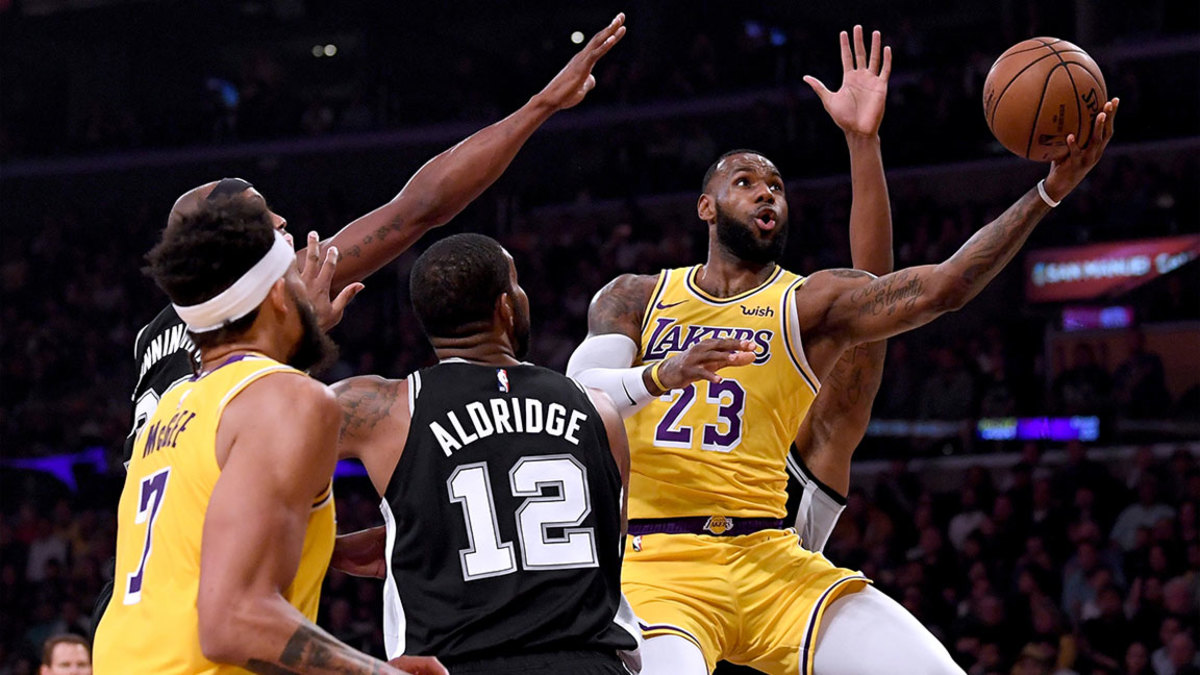Man, did I miss the NBA. I missed LeBron’s perfectly placed passes and the fickleness of his hairline. I missed Patrick Beverly’s surly defense, and Russell Westbrook’s horrible shot selection and equally horrible fashion sense. I even missed Reggie Miller’s very bad brain.
Now, thanks to the “bubble” at the ESPN Wide World of Sports Complex at the Walt Disney World Resort in Florida, and a Howard Hughes-level of aseptic precaution, it’s back. What a pleasure it’s been to be absorbed in four quarters of inconsequential basketball drama and forget about the world on fire for hours at a time. I’m not the only one. A Los Angeles Times story wrote that summer sports viewership is up 150 percent compared to this time last year. It’s clear people are clamoring for something like the old normal.
In basketball terms, the old normal ended back in March when Utah Jazz center Rudy Gobert tested positive for COVID-19 and the league shut everything down. We’re all tempted to see the NBA’s return as a signal that the old normal is on its way back—more on that in a minute.
So far, the NBA restart has been a success. While the restart of Major League Baseball—the players of which are all too familiar with unwanted positive tests—has been hampered by dozens of COVID infections, the NBA has managed to keep everyone in the bubble virus-free for over a month. But it’s no easy task.
The 1,000-plus people living in the NBA bubble—players, coaches, referees, sweat-moppers, trainers, journalists, barbers, cooks—are subject to levels of surveillance that would make the CIA blush. Everyone adheres to a series of strict protocols. Hand sanitizers are available every 10 feet of campus. Access to facilities are granted through 25 health checkpoints, at which individuals swipe their Disney Magic Band. Everyone wears a proximity sensor that beeps if they stand within six feet of another person for longer than 10 seconds. Players are not allowed to leave without approval and family will be allowed to visit only after the end of the first round of the playoffs. Everyone gets tested every day and receives results within 24 hours. By the end of the season in October, over 100,000 COVID tests will have been administered.
Keeping the outside world out of course makes the spectator experience a little weird, so the NBA decorates games with virtual versions of things we’d expect to see. The league collaborated with Microsoft, using the software company’s “Together Mode” video conferencing technology to put fans on 17-foot-tall LED screens that surround the court where rows of seats should be. It feels like a giant Zoom meeting because that’s effectively what it is, but instead of watching your coworkers eat at inappropriate times, you see pixilated fans reacting a few beats late to what’s happening on the court because their internet is lagging. There’s even a team tasked with hitting the virtual eject button if anyone tries to put on an OnlyFans preview during a time out.
The NBA isn’t the only professional sporting league trying to make us, the viewers, not notice how weird it is to watch hermetically sealed games. The Premier League borrowed EA Sports’ FIFA video game technology to pipe virtual crowd noise into its broadcasts. Major League Baseball fans can pay to be a virtual fan in an actual stadium seat. Brad Zager, executive producer and head of production and operations at Fox Sports, explained to The Verge: “We’re not looking to fool anybody; it’s still about the game. But shot-to-shot, when you’re watching a broadcast, it’s not more noticeable you’re watching a broadcast in an empty stadium. We want to give people a sense of normalcy.”
I find these attempts at recreating reality to be more jarring than if the stands were just empty. No amount of virtual fans will stop me from noticing the sealed booths for announcers and stat keepers, the masks everywhere. At certain angles, the court seems to be floating in the black vacuum of space, and when players run to save a ball from the sideline, they disappear into the shadows and for a second I wonder if they’ve fallen into some abyss.
But, while the game is going, I forget. I forget about all the strangeness and the world seems normal again. And I’m noticing less the more basketball I watch. The restart of the NBA is evidence that people can get used to anything.
And it’s a good thing we can. According to a recent ESPN article, the NBA’s success with the bubble is “helping lay the ground as a potential blueprint for the 2020-21 season.” Just this week, the World Health Organization said that even with a vaccine, the world won’t go back to the way it was before. If that’s the case, this pasteurized version of NBA basketball isn’t a signal that the old normal is on its way back—it’s the opposite.
It’s a testament to NBA leadership that it’s been so successful, especially in Florida, where some of the worst COVID outbreaks of the past couple months have occurred. Clearly, the NBA has been more effective at dealing with the virus than our own elected governments. Part of that success is because the NBA isn’t trying to recreate what was normal. It’s creating a new normal, more or less on its own terms, and the fans are all buying in.
Based on their ability to keep the virus at bay, we might look to the NBA and see how we can employ their methods in our own life pods. I kind of like the idea of digital versions of my family members “sitting” at the Thanksgiving table, my finger ready to hit the eject button if my uncle talks about Qanon again.
from Men's Journal https://ift.tt/34r62Tf





0 comments